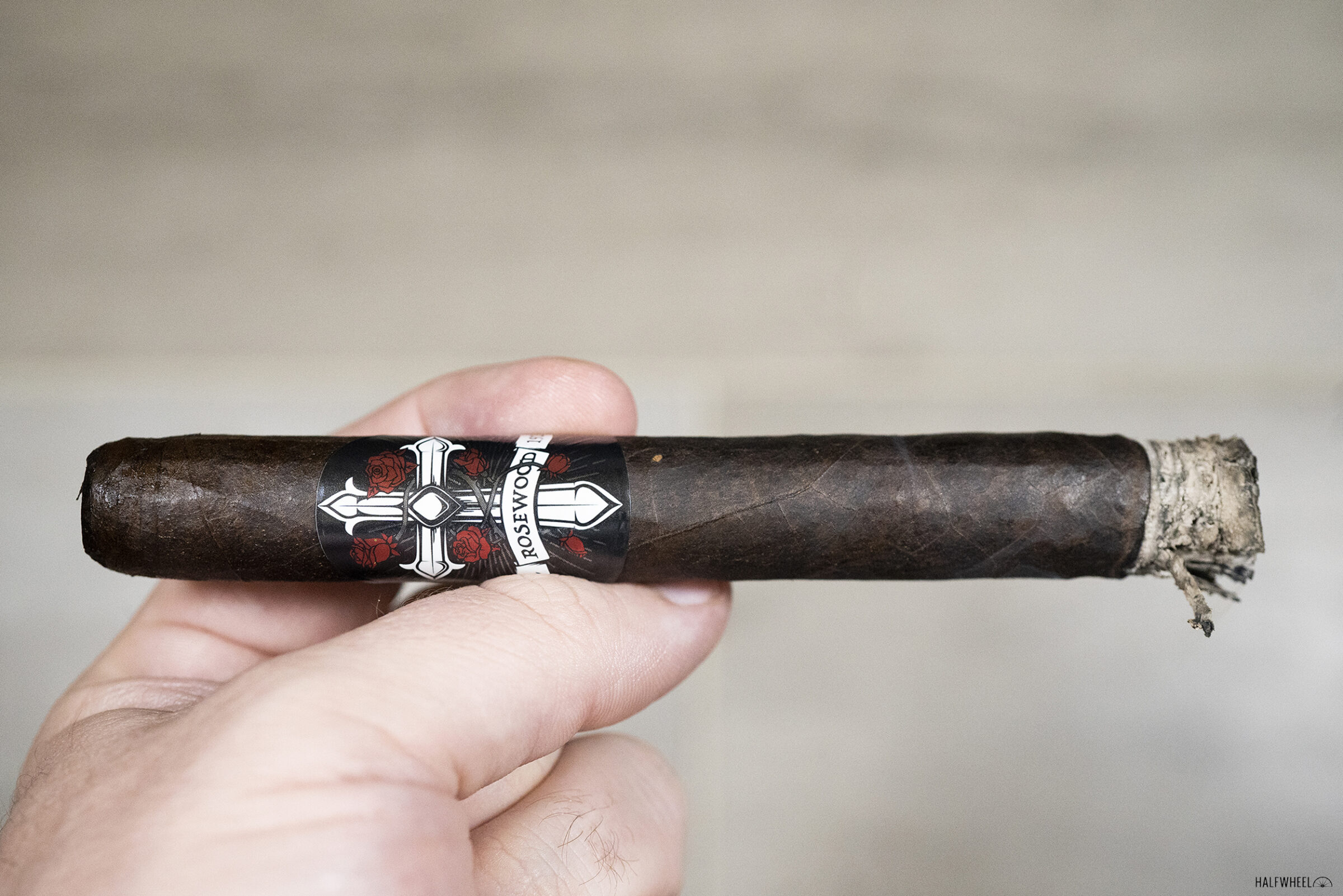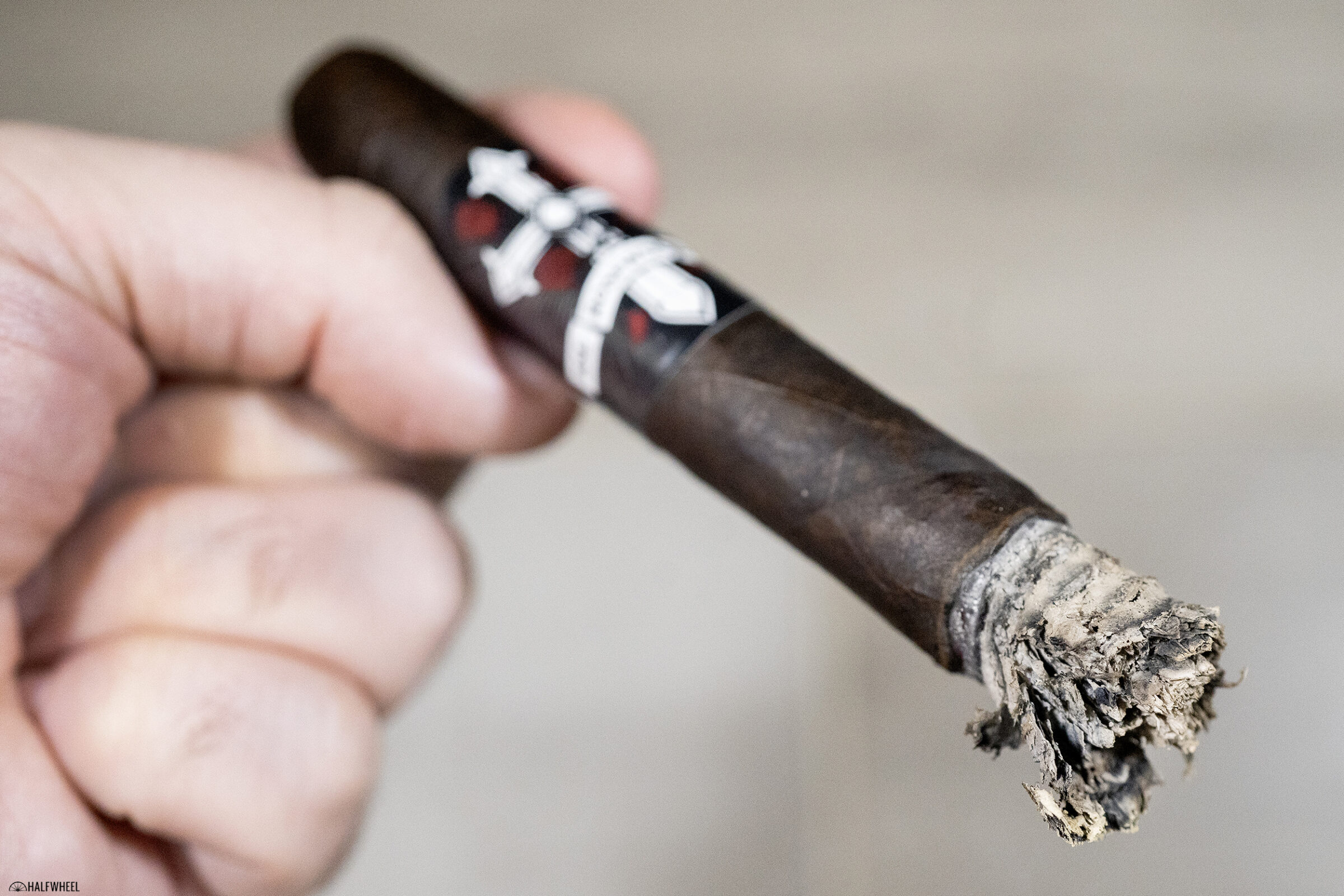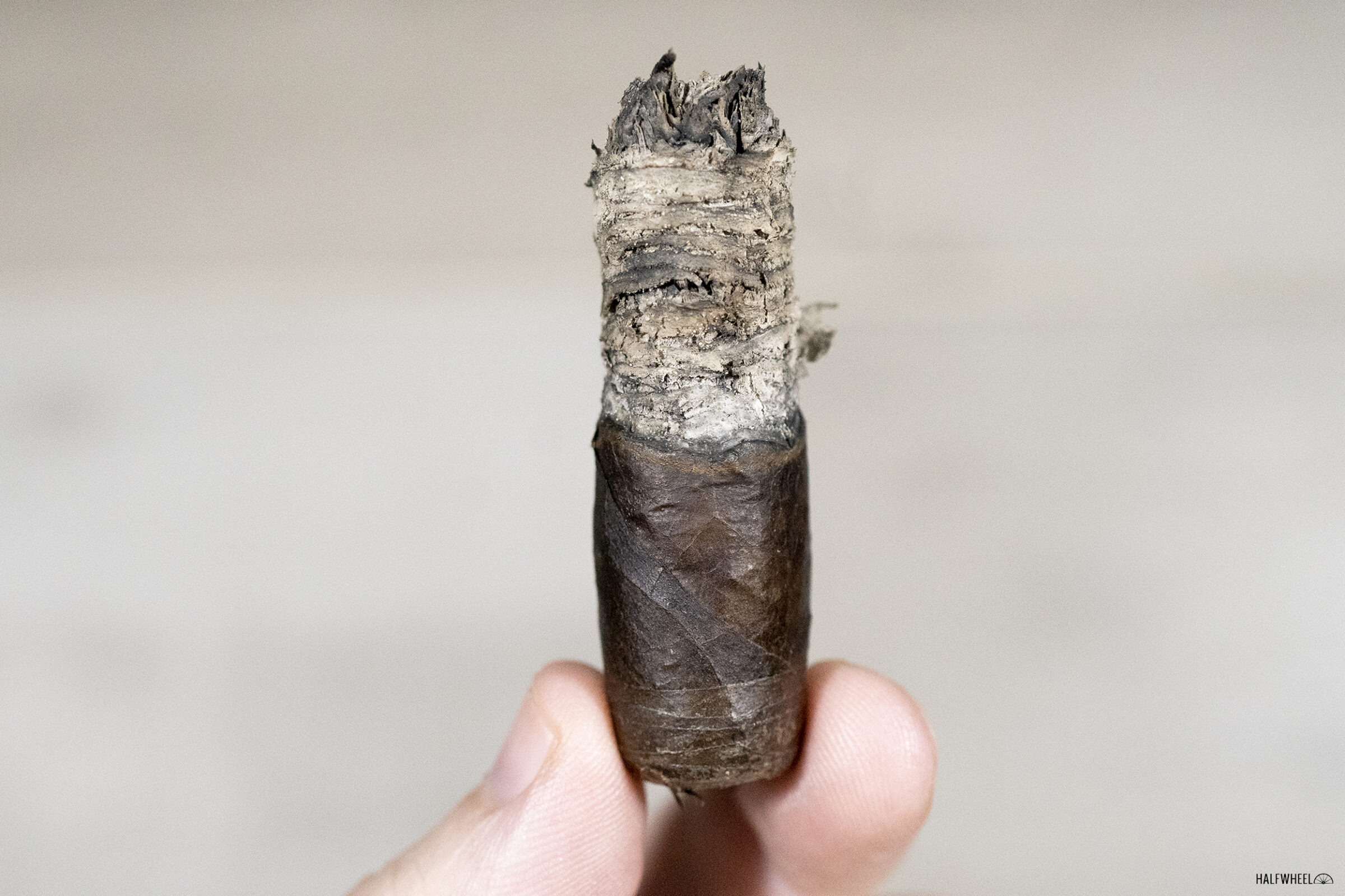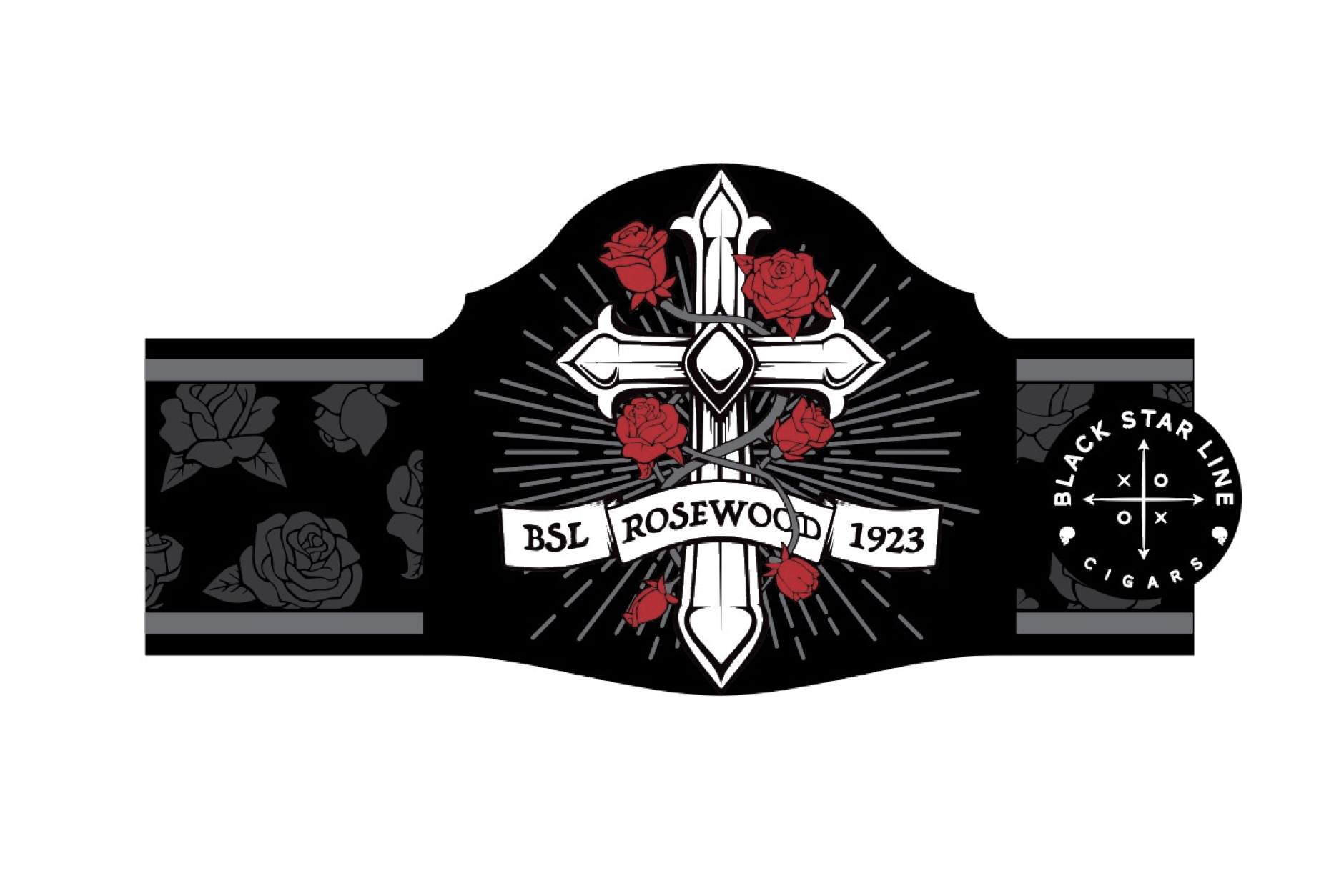For its newest cigar, the Rosewood 1923, turned to a fairly well-known factory with which it hadn’t yet worked, but wanted to: Fábrica Oveja Negra.
Best known as the home of Black Label Trading Co. and Black Works Studio, Fábrica Oveja Negra—Spanish for Black Sheep Factory—does make cigars for other brands, but generally keeps its production with the Oveja Negra Brands family, meaning cigars for Dissident and Emilio.
The Black Star Line Cigars Rosewood 1923 is a 6 x 48 corona that uses a Mexican San Andrés wrapper, an Ecuadorian binder, and fillers from the Dominican Republic and Nicaragua.
“I have always wanted to work with Oveja Negra. I am a huge fan of their cigars and actually James (Brown) was one of the first people I reached out to when I was looking to enter the cigar industry,” said Aric Bey, owner of Black Star Line Cigars, in a press release when the cigar was announced in June. “I ended up gaining JB’s respect through my hard work and persistence with what I have done thus far with AGANORSA Leaf.”
As for the name, it is a reference to one of the darkest events in the history of the United States, the Rosewood massacre that occurred in January 1923 in Levy County, Fla.
Following a lynching, Black residents of Rosewood began defending themselves against attacks. As a response to this, white mobs came to the town—which had an independent Black community—destroying it and killing between seven and 27 people in the process. The town was so completely and thoroughly destroyed that it was simply abandoned, leaving behind a lone general store.
“I love the name because it not only pays homage to the 100-year anniversary of the massacre but also pays homage to my fraternity brother John Singleton, who made a movie about Rosewood in the early 90s. I am a member of ‘Greater’ Beta chapter of Kappa Alpha Psi Fraternity Inc., and Singleton passed away a few years ago.”
That film, Rosewood (1997), starred Jon Voight, Ving Rhames and Don Cheadle.
Black Star Line Cigars showed off the cigars at the 2023 PCA Convention & Trade Show in July, with the cigars arriving in stores in mid-August. The cigar is offered in both bundles and boxes, with the bundled version priced at $12.50 per cigar and the boxed version priced at $13.50, meaning $250 and $270 for a full bundle or box, respectively.

- Cigar Reviewed: Black Star Line Cigars Rosewood 1923
- Country of Origin: Nicaragua
- Factory: Fábrica Oveja Negra
- Wrapper: Mexico (San Andrés)
- Binder: Ecuador
- Filler: Dominican Republic & Nicaragua
- Length: 6 Inches
- Ring Gauge: 48
- Vitola: Corona
- MSRP: $12.50 (Bundle of 20, $250); $13.50 (Box of 20, $270)
- Release Date: August 2023
- Number of Cigars Released: Regular Production
- Number of Cigars Smoked For Review: 3
The Black Star Line Cigars Rosewood 1923 is certainly in the running for the cigar with the darkest wrapper I’ve seen this year, as the leaf is a rich, deep, dark brown, evenly colored with a matte finish. All three wrappers are dry with lots of toothy texture for my fingers, while the veins are small and the seam lines are nearly invisible. The cigars look to be rolled well, while a physical inspection reveals them to be quite firmly rolled. The foot has a good bit of pepper in its aroma, along with some damp tree bark and a touch of charred earth, with occasional hints of sweetness that remind me of grilled peach, in one instance more peach; the other, more grill. The draw ranges from a touch firm but not obstructed to smooth and easy, with one at each end and one in the middle of that range. Flavors here are pretty tame, with no pepper to speak of and a bit of dry root beer and bark well in the background.
While I wasn’t worried by airflow on the cold draw of the first cigar, I find myself wanting a slightly more open draw on the first puffs, as getting the cigar fully lit and a sufficient amount of smoke out of the cigar is a bit more labored than I would prefer. I get it on the second and the results are immediately noticeable, as both smoke and flavor are more plentiful. The cigar has a pronounced, fairly bright black pepper that starts things off, not quite a pepper bomb, but some fireworks that aim for the middle of my tongue. The better draw also seems to speed up the cigar’s combustion rate just a bit, something I’m not usually too concerned about but it does help to see the burn line make progress. Early retrohales don’t quite have the explosiveness as what hits the palate but rather leaves me feeling a slow burn in my nostrils. Creaminess starts to emerge and then shifts a touch to remind me of condensed milk. Through the nose, the Black Star Line Cigars Rosewood 1923 has a touch less pepper than what I’ve tasted thus far, a subtle accent that can be adjusted as you wish, as a small retrohale produces a light tingle, while a longer, slower one produces a more pronounced tingle with a much longer finish. After starting off close to full, the flavor has dialed back to medium-plus, while body is medium and strength is fairly mild. Other than my issue with one cigar’s draw, there are no technical issues in the first third, and in fact the cigar burns quite well and produces good amounts of smoke.

A very palate-pleasing bit of rich, hearty earthiness emerges at the start of the second third of the Black Star Line Cigars Rosewood 1923. While the first third was about starting big and dialing back, the second third makes it known quickly that this is about developing and expanding the flavor. The condensed milk sweetness settles back a bit and begins to turn towards half-and-half, while a change to either dry wood or plain potato chips comes along to expand the physical sensation to the outer parts of my tongue as well as give my taste buds some new sensations. Retrohales are still tempered but pack a punch, and I find that a short, slow retrohale delivers the kind of accent I want while delivering just enough tingle. Retrohales around the midpoint have a brighter expression of the earthiness I found at the start of this section, with the cigar coming alive with bright black pepper that tingles my nostrils for a few seconds. There are a few puffs in one cigar where I find the profile to be a combination of too light and dry in spots, which seems to combine with the pepper to push the profile out of balance, especially compared to the other two cigars. The final puffs of this section signal another change as the earthiness gets a bit drier, textured, and dare I say rougher as it aims more for the back of my throat as opposed to my taste buds. For much of this section, flavor sits around medium-plus but is more nuanced and detailed than what it was in the first third, while the body is still medium to medium-plus. The biggest change has been the emergence of some strength, something I’m not surprised by given that James Brown was involved in the creation of the cigar. The Black Star Line Cigars Rosewood 1923 continues to burn very well, nearly problem-free as long as it’s given a regular puff.

I’m a bit surprised to see the flavor profile pivoting to introduce a decent amount of creaminess at the start of the final third, but that’s exactly what the Black Star Line Cigars Rosewood 1923 does, reminding me for a moment of how a rich milk stout hits my taste buds. The three cigars continue to explore some combinations of the main flavors they have offered thus far, mainly by way of different ratios of earth, pepper, wood, char, and a fading creaminess. While some of these combinations are not quite causing irritation, the sensations they elicit at top of my throat aren’t the most enjoyable. The final puffs bring on a bit more strength than I was expecting and am generally in the mood for, signaling that it is time to put the cigar down before I feel any woozier than I suddenly feel. In one cigar, there is also a slight change in flavor that I’m not sure how to describe, other than that the wood now tastes off, maybe a bit damp, but not sour. Flavor is medium-plus, body is medium-plus, and strength is medium-plus in two of the cigars and medium in the third. Construction is generally very good, with one cigar needing some touch-ups to make it through the back half of this section. The burn line, draw and smoke production have all been very good.

Final Notes
- A project like this seems like the perfect opportunity to utilize the back of the band to tell a bit of the story of Rosewood, as I wonder how many people that smoke this cigar know where the name comes from and why it is significant to Arik Bey of Black Star Line Cigars.
- To take it a step further, I’d love to see a QR code on the back of the band that leads to a video of Bey talking about the cigar.
- While the film Rosewood did not win an Oscar, it did gain 13 nominations from other film awards groups, winning two from the Political Film Society, USA in the categories of Exposé and Human Rights, while writer Gregory Poirier won the Writers Guild of America’s Paul Selvin Honorary Award, which is given to the script that “best embodies the spirit of the constitutional and civil rights and liberties which are indispensable to the survival of free writers everywhere and to whose defense Paul Selvin committed his professional life.”
- Selvin was an attorney who spent much of his career in First Amendment legislation and whose Century City practice was deeply involved with the Writers Guild of America, which he had represented as counsel.
- My colleague, Brooks Whittington, reviewed Black Star Line Cigars’ War Witch Lancero in March 2022.
- As noted above, this is the first cigar that Black Star Line Cigars made at Fábrica Oveja Negra. Black Star Line Cigars has also made cigars at Tabacos Valle de Jalapa S.A., the previous name of Aganorsa’s factory, as well as TABACALERA LA iSLA.
- Two of the three cigars had me feeling a bit woozy from nicotine, while the third got to medium-minus.
- Final smoking time was two hours and 10 minutes on average.
- The cigars for this review were purchased by halfwheel.
- Site sponsor Cigar Hustler carries the Black Star Line Cigars Rosewood 1923.
I really have to hand it to Aric Bey, James Brown, the team at Fábrica Oveja Negra and anyone else who was involved with this cigar, as it was quite good and very enjoyable from start to finish. The cigar shows an impressive journey of flavors, starting off with some big, peppery notes, dialing them back, welcoming in some creaminess to open up the profile and then spending the second half arranging and rearranging those components into different combinations. The second third of the cigar is by far my favorite as it showed the most progression and the best results. The first third, meanwhile, is a solid attention-getter, while the final third is a bit of trial-and-error, never posting the richness of the second third and with some combinations not resulting in the best outcome. The Black Star Line Cigars Rosewood 1923 is a solid showing from both brand owner and factory, and one I would certainly recommend trying if you're in the mood for a medium to full flavored cigar that not only gets and keeps your attention but earns it nearly every puff along the way.


